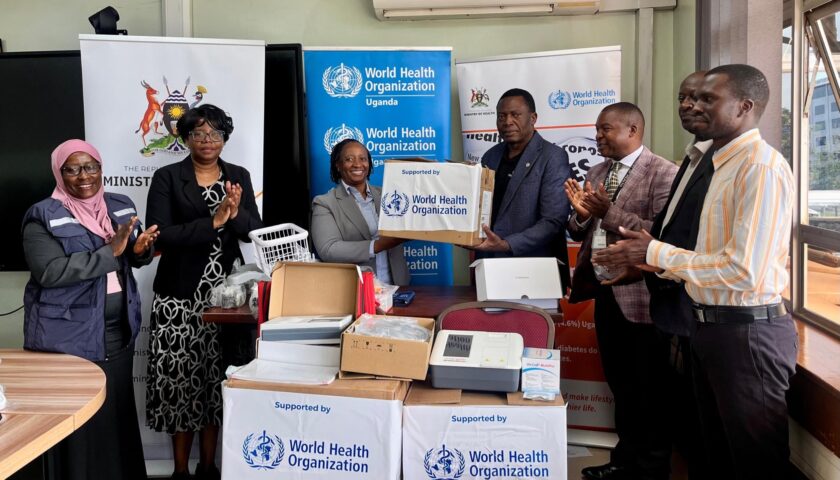Uganda: The Ministry of Health (MoH), with support from the World Health Organization (WHO) Uganda, has handed over new diagnostic equipment to 40 health facilities in Sembabule, Kabale, Koboko, and Lira City. This initiative aims to strengthen Uganda’s response to non-communicable diseases (NCDs) such as high blood pressure (hypertension) and diabetes, whose cases have doubled in the past five years. The new equipment will also enable NCD screening to be integrated into other health services like HIV, TB, and malnutrition checks, allowing patients to receive comprehensive care during their health visits.
According to Dr. Olaro Charles, the Director General of Health Services, the new equipment will support early disease screening and prevention efforts in all regions of Uganda. He explained that while the selected districts currently have a high burden of disease, similar support should reach all districts to strengthen prevention and early detection across the country.
“These districts were selected because of their high disease burden; however, that should not be the only criteria. We should not wait for a district to experience a high burden before providing such support,” he said.
Dr. Olaro also highlighted the importance of integrating preventive health messaging with the use of this new equipment to encourage early screening and community awareness.
“Access to these tools should be part of our standard health system operations to strengthen prevention and early detection across all areas. This equipment should also be accompanied by messaging that emphasizes prevention… our goal is to make it part of primary prevention for early screening,” he added.
Stronger Health Systems to boost NCD Screening
Dr. Kasonde Mwinga, the WHO Country Representative in Uganda, said the handover marks a strong step in improving access to NCD diagnosis and treatment, but also emphasized the need to strengthen the entire health system.
“We know that the handover of equipment is one thing, but equipment alone is not enough. It must be supported by other elements, such as robust health systems and skilled personnel,” He reaffirmed WHO’s commitment to working closely with the Government of Uganda to improve how NCDs are monitored and managed.
“The World Health Organisation remains committed to working with the Government of Uganda to strengthen non-communicable disease surveillance,” Mwinga said.
The Growing Burden of Non-Communicable Diseases in Uganda
NCDs have become a major public health concern in Uganda. According to a 2012 report by the World Health Organization, NCDs accounted for 27% of all deaths in Uganda. More recent data shows that this figure has now risen to about 33%, indicating a steady increase in lifestyle-related illnesses.
National health statistics reveal that 23.5% of adults aged 18–69 years in Uganda have high blood pressure, while 3.3% are living with diabetes. Despite these numbers, awareness and treatment remain very low — only 7.7% of people with hypertension know they have it, and more than 80% of those diagnosed are not on regular medication.
Experts say that the rise in NCDs is driven by urbanization, poor diets, physical inactivity, tobacco use, and alcohol consumption. As people’s lifestyles change, many become more vulnerable to chronic diseases that often go unnoticed until they become severe.


